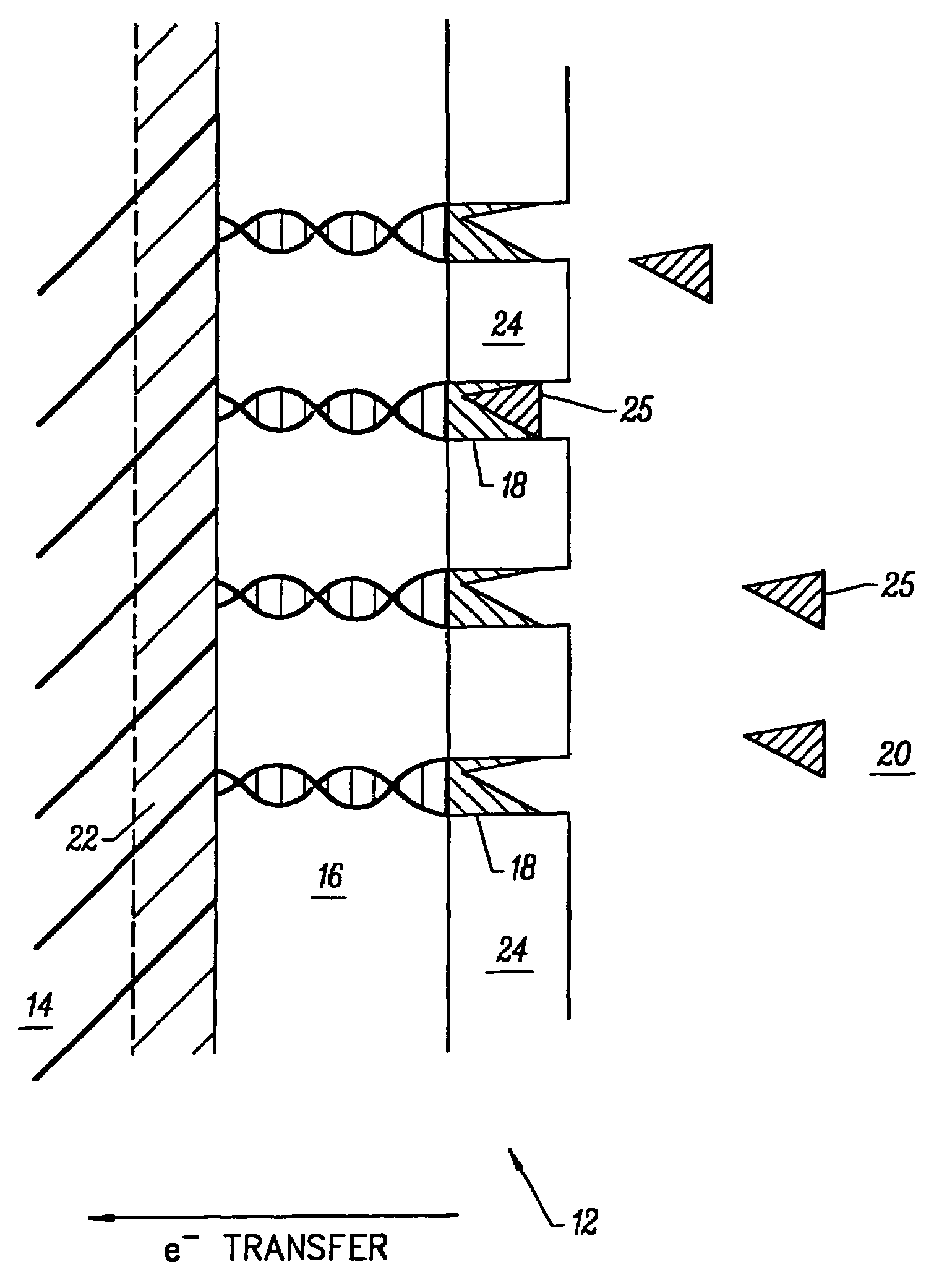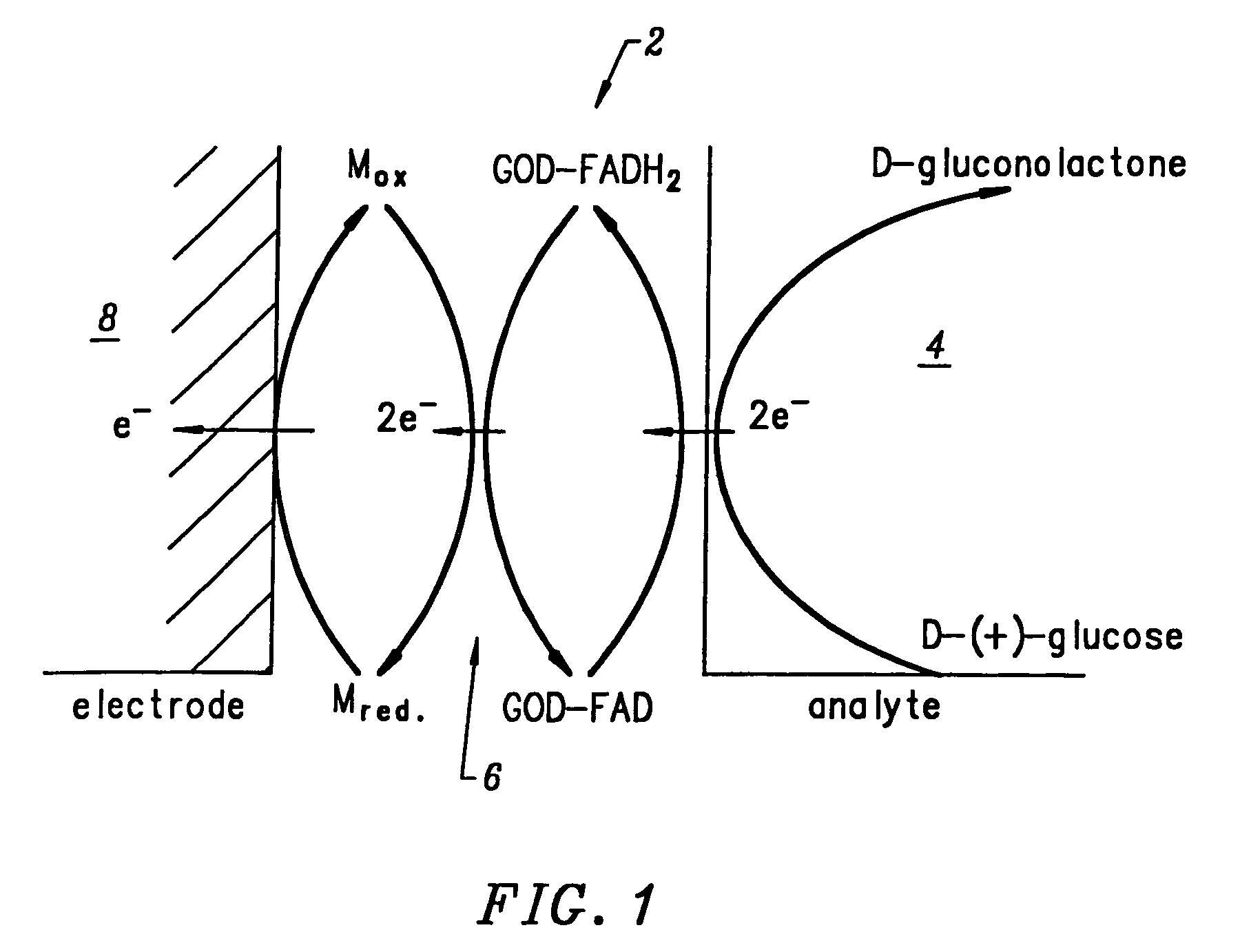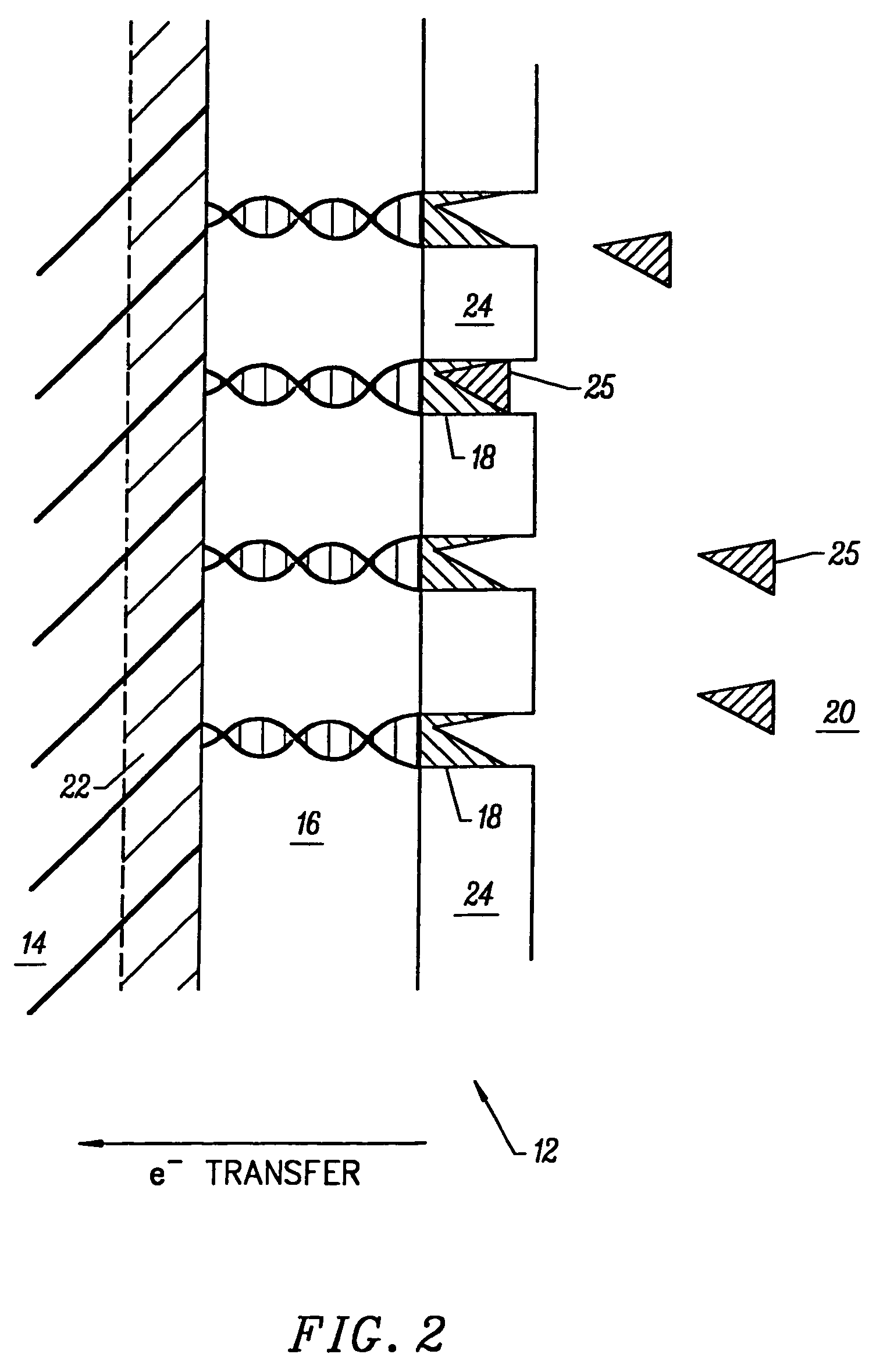Molecular wire injection sensors
a technology of molecular wire and sensors, which is applied in the field of biosensors and chemical sensors, can solve the problems of inability to remove complex mixtures inside the permselective membrane, inability to remove complex mixtures, and almost all oxidation of ambient oxygen, and achieves fast response, high dynamic range, and high sensitivity
- Summary
- Abstract
- Description
- Claims
- Application Information
AI Technical Summary
Benefits of technology
Problems solved by technology
Method used
Image
Examples
example a
Preparation of Polycrystalline Silicon p-n Junction Solar Cell
[0238]A commercial polycrystalline silicon p-n junction solar cell chip (a 0.1799 g and 1.75 cm2) from Edmund Scientific, Barrington, N.J. 08007–1380 (Stock Nos. 35,220 and 35,221) was exposed to 980 Lux light intensity from a F15T8 / CW Westinghouse bulb at 25° C. With the dark blue emitter surface facing the light source, the short circuit DC output of the dry solar cell substrate was measured by a digital multimeter (DMM) (Extech Instruments; Model No. 383273). Measured DC output was 121 mV and 98 uA. The solar cell chip was then washed with analytical reagent electronic-grade solvents: i) acetone; ii) methanol; iii) 18 Mohm H2O; and iv) methanol. It was allowed to dry in a dust-free environment. This prepared the semiconductor p-n type surfaces for electroplating.
example b
Electrodeposition of DNA onto a Polycrystalline Silicon p-n Junction Solar Cell
[0239]A DNA electroplating solution was prepared using 18 Mohm sterile water as the solvent. 0.1062 g of DNA (degraded free acid from Herring sperm) was added to 100 ml of water. The pH of the resulting solution was ˜2.00. The pH was adjusted to ˜7.00 with NaOH and HCl. No buffer was added to the electroplating solution. The final salt / electrolyte concentration was −2.
example c
Electrodeposition of Glucose Oxidase (GOD) onto a DNA-Coated Polycrystalline Silicon p-n Junction Solar Cell
[0240]A glucose oxidase (GOD) electroplating solution was prepared using 18 Mohm sterile water as the solvent. 0.0092 g of glucose oxidase (EC 1.1.3.4; ˜1,000 units) was added to 100 ml of water. The pH of the resulting solution was ˜6.00. No buffer or further adjustment of pH was necessary. 1.00 ml of methanol was added to the GOD electroplating solution and mixed thoroughly. Next, the DNA-coated polycrystalline silicon p-n junction solar cell from Example B was submerged in the GOD electroplating bath with dark blue emitter surface exposed to 1700 Lux light intensity from two F15T8 / CW Westinghouse bulbs at 25° C. for ˜8.10 hours. The solar cell chip was removed from the GOD bath and placed on a paper towel to dry. The dark blue emitter surface was exposed to the 1700 Lux light source during the drying process which took ˜12.00 hours at 25° C. in air. GOD electroplated on the...
PUM
| Property | Measurement | Unit |
|---|---|---|
| thickness | aaaaa | aaaaa |
| thickness | aaaaa | aaaaa |
| period of time | aaaaa | aaaaa |
Abstract
Description
Claims
Application Information
 Login to View More
Login to View More - R&D
- Intellectual Property
- Life Sciences
- Materials
- Tech Scout
- Unparalleled Data Quality
- Higher Quality Content
- 60% Fewer Hallucinations
Browse by: Latest US Patents, China's latest patents, Technical Efficacy Thesaurus, Application Domain, Technology Topic, Popular Technical Reports.
© 2025 PatSnap. All rights reserved.Legal|Privacy policy|Modern Slavery Act Transparency Statement|Sitemap|About US| Contact US: help@patsnap.com



